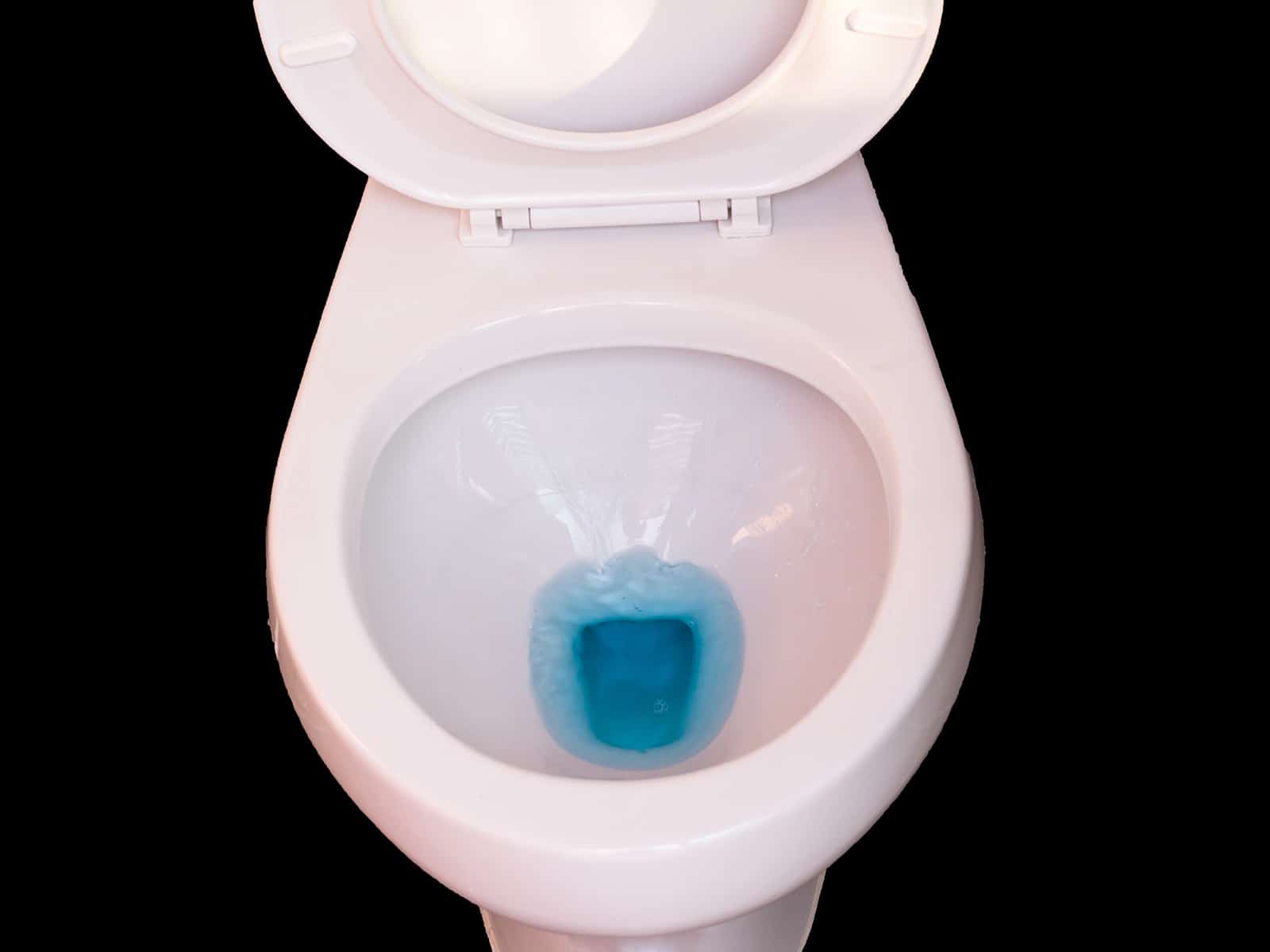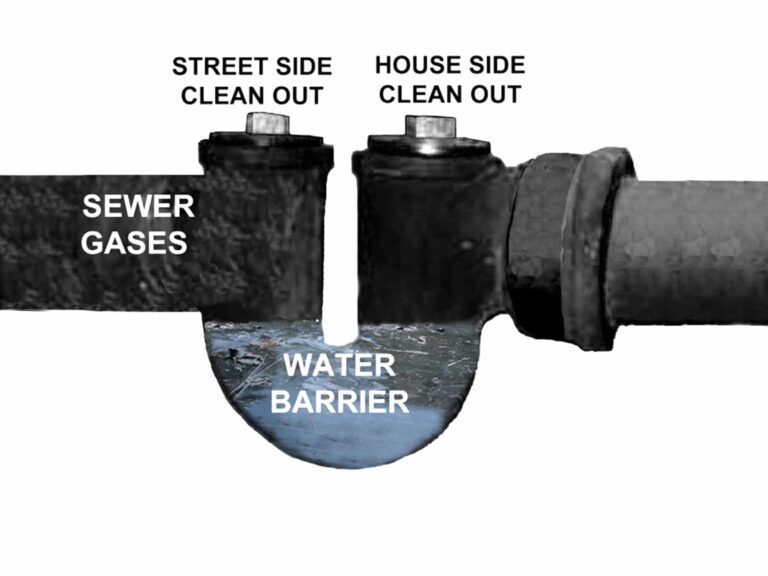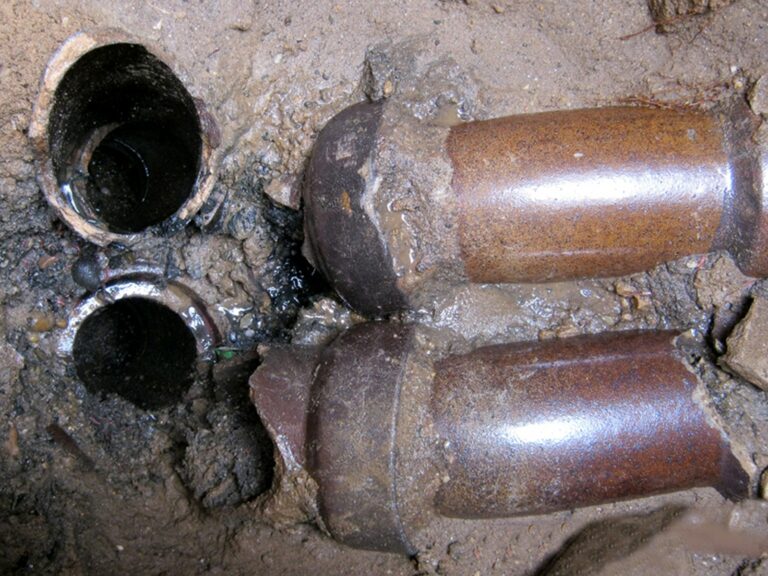Do you know how to perform a residential sewer dye test to discover leaks or pipe defects? Municipalities will perform a dye test on a sewer to determine if freshwater and storm water run-off are entering the city’s sanitary sewer lines. This is one of the main reasons why raw sewage overflows into creeks and neighborhood drainage systems.
The two types of sewer lines, sewage, and stormwater drainage, are purposely separated to prevent this from happening. Municipalities also conduct investigations to see if sewer leaks are causing roadway washouts or other defects. As we’ll explain below, residential dye tests are also needed and helpful in many cases. There are of course other types of water leak testing, to learn more read this water leak testing guide.
Residential Sewer Dye Testing
If you are a homeowner, you can also face the same problem of water leaking from an unknown source. That’s when a sewer dye test can be performed by a plumber. This is a dye test to determine if your home’s yard drainage system is properly connected, or defective. You may have a combined public sewer main fronting your property.
A combined sewer is sized to take both wastewater from home, as well as rainwater from your roof leaders, etc. On the other hand, a separate dedicated sanitary sewer only accepts blackwater from toilets and greywater. Most people are not familiar with the terms “blackwater” or ”greywater”. Greywater is considered wastewater from your home’s drains, sinks, washing machines, dishwashers, and bathtubs. In simple terms, it is wastewater other than from toilets that does not contain fecal matter.
In some jurisdictions, greywater is reused for other purposes, such as flushing a toilet. This reuse acts to help preserve our precious resource of fresh potable water. Blackwater on the other hand cannot be reused until it is properly processed at a sewage treatment plant. Blackwater contains human waste, or other items heavy in bacteria and potentially harmful components.
The 4 Primary times when you need to perform a sewer dye test
- A problem with pooling water around the home’s foundation or low spots
- To verify that your property drains into the proper public sewer system
- Any water flowing either above ground or onto a basement floor
- If a roadway or sidewalk washout exists, yet there is not a freshwater leak present

Performing an Investigation For a Residential Sewer Leak
A home sewer dye test itself is not complicated to perform. However, when performed by a professional plumber, they can not only conduct the dye test but also accurately determine what the result may indicate.
If the dye becomes visible, then your home has failed the dye test. You will then need a licensed plumber in the area who can make the necessary repairs. This may mean one of two things. You may need a plumber to properly connect your home’s drainage system to the proper public sewer system. This would legalize improper existing sewer connections.
The second case, which is typically loose or disconnected drain pipes, would require a sewer pipe repair. This would alleviate the leakage of wastewater, and the problems that this causes.
The 7 steps to perform a sewer investigation to check for pipe defects
The following will verify that all sanitary sewer drains are properly plumbed. It will also make sure there are no cross-connections to the storm drain system. Here are the simple 7 steps to perform a residential sewer dye test:
1. What type of dye to use for the test
In the past, your best option was to purchase an appropriate liquid sewer tracing dye. You had to make sure that it was non-toxic, non-staining, and biodegradable. The goal is to force the brightly colored dye into the system, and then watch where the dye exits. There are many dyes available that are designed for a sewer dye test.
As secondary choices, you could have used food dye or clothing dye. If none of these items are readily available, and the leak seems close, you could even use milk. If you use milk and have a sewer leak, the leaking water will turn milky white.
The best available and easiest-to-use dye option now comes in the form of tablets. Because these dye tablets are highly concentrated, wear rubber gloves. Simply insert one single dye tablet into your plumbing system. Using tablets avoids the risk of spills, stains, or ruining personal possessions.
2. At what point do you start the test?
Locate the discharge points of the sanitary sewer and the storm drain piping around the home. Locations where you suspect unwanted leakage are good candidates. If your issue is outside the home, find the nearest exterior sanitary sewer outlet near the home. This is typically your main house trap. If these locations pose a challenge, simply flush the dye down inside your toilet (see below).
3. How to insert the dye for a sewer dye test
Pour the dye inside the toilet bowl or into a sink that is close to the point you want to test. Start flushing the toilet several times, or run the water into the sink for several minutes.
4. The waiting period for a determination
Depending on where the leak or cross-contamination exists, you may have to wait minutes or hours before seeing the dye flow through your home’s plumbing system. The dye can appear in floor drains/covers, sump lids, or onto flooded basement floors or yard areas. In some cases, if the defect in the pipe is outside of your home, the dye can underground or inside the public sewer.
5. What if no colored dye appears?
If no dye appears, then you can assume your drainage and sewer systems are properly connected, and you may simply have a water line leak somewhere within your home.
6. The confirmation that you have a sewer drain issue
If you do observe dye flowing into unwanted areas, then you will need the services of a plumber to make the right repairs inside your home. If the sewer dye appears it typically means there are porous or open joints on the sewer drain lines.
7. The worst-case scenario
In worst-case scenarios, the sewer dye test will show dye appearing inside a public sewer not meant for that type of wastewater or stormwater flow. To know this, manholes on the public sewers will have to be lifted. This task is best left to a professional.
These are sewer repairs that are the most expensive. It will entail rerouting that particular wastewater to the correct public sewer in the roadway. Storm sewers can only accept stormwater, and sanitary sewers can only accept sanitary wastewater. Only combined public sewers can accept both sanitary wastewater and stormwater.
How Is a Sewer Dye Test Done? 5 Tips for Liquid & Tablet Dye Testing
Tip 1 – If possible, have the home’s plumbing diagrams on hand to mark where the dye is added. Also carefully note where the dye exited. Also, record what time the dye was added and what time the dye was seen leaving the system. The length of time indicates how far away from the insertion point the defect is. All of this information will be of value to your plumber in diagnosing the extent of your plumbing problem.
Tip 2 – For best results, follow the dye manufacturer’s instructions or add about a tablespoon of dye to each home fixture. If you are using dye in a tablet form just insert 1 tablet. Plumbing fixtures include the toilet, floor drains, sinks, and any fixtures that are plumbed into the sanitary sewer system.
Tip 3 – It is best to flush each fixture with over 10 gallons of water, or at least until dye is observed leaving the sewage system. The more water you flush, the less time it will take to observe the dye exit the system.
Tip 4 – You may station people at multiple sites at each sanitary and storm drain discharge point until the dye is observed. Once dye is observed, note the time, and repeat the steps for a dye flush test for each drain that you suspect may be leaking.
Tip 5 – Contact Balkan Sewer and Water Main, the largest and most trusted sewer and water main service NYC for help with your next sewer dye test. All Balkan Technicians are experts at performing accurate dye tests, with definitive determinations, that result in an accurate next-step solution.
Sewer Testing, Repair, or Replacement – Balkan is “The Team You Trust’
Count on Balkan for fast, courteous service and quality work from experienced crews, including sewer repair or replacement services for residential and commercial businesses. For over 70 years, over 90,000 folks have.






